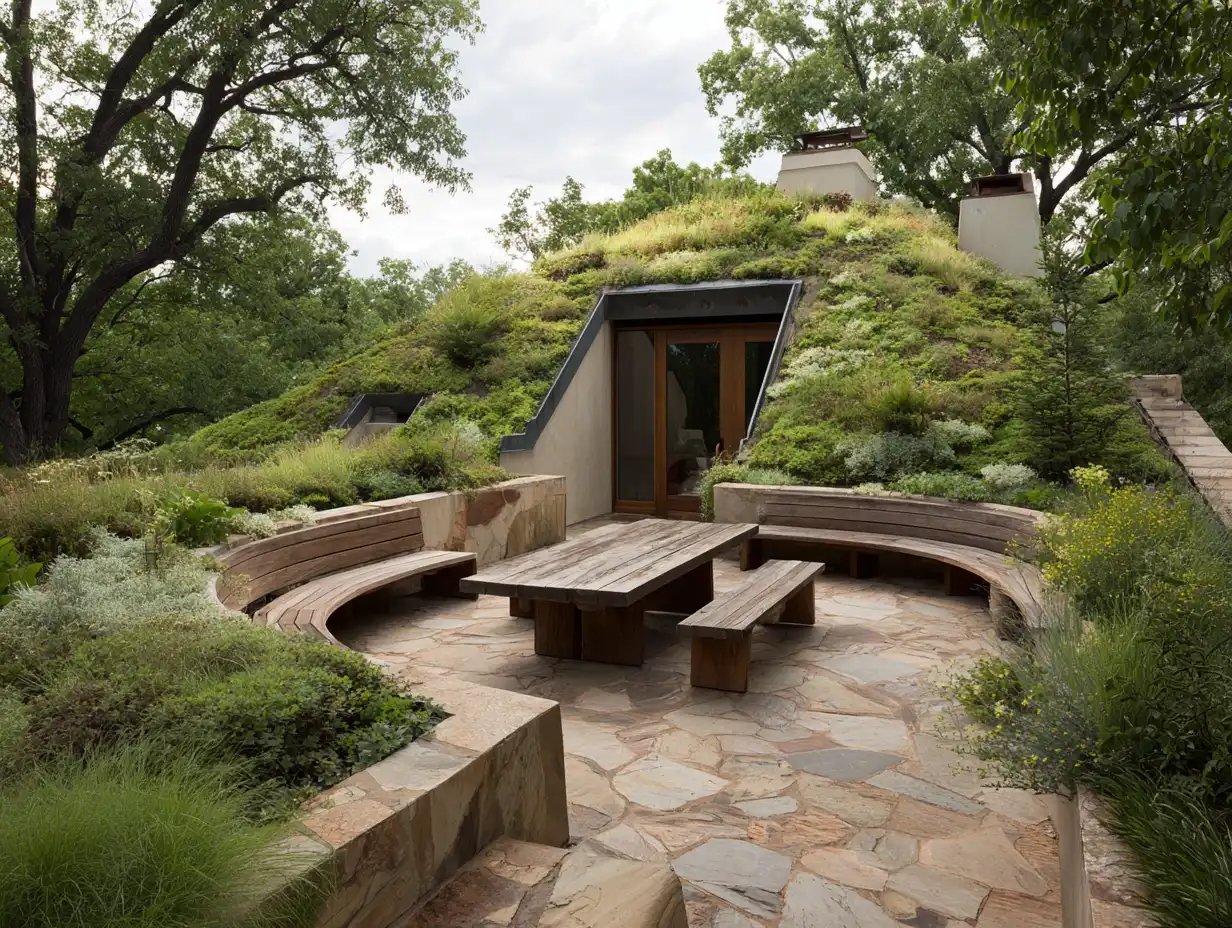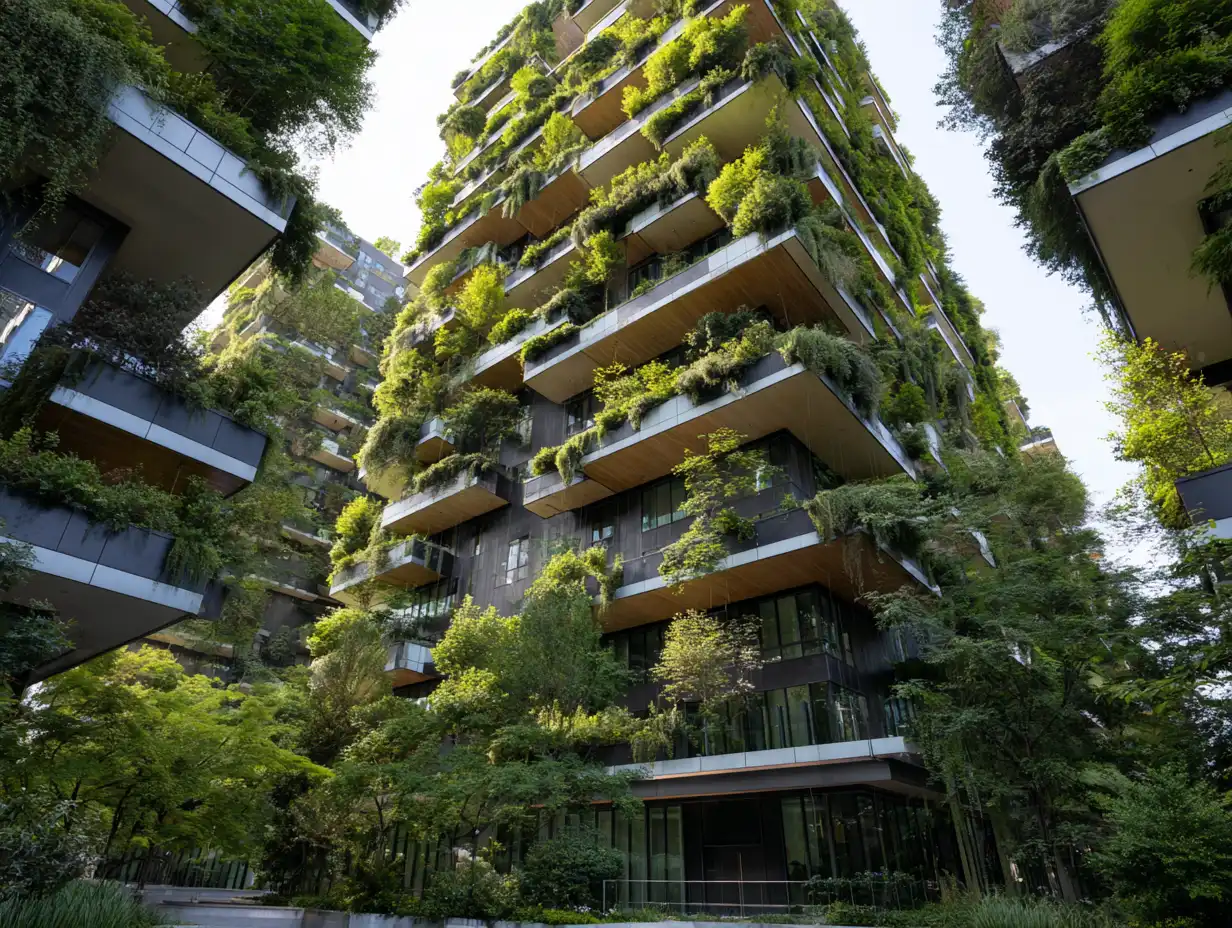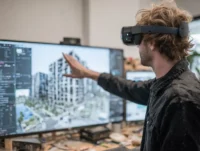As we step into a new era of design and construction, the future of sustainable architecture is more exciting than ever. With the pressing challenges of climate change and resource depletion, architects and builders are reimagining how structures can harmonize with the environment. It’s not just about reducing energy consumption; it’s about creating spaces that enhance our lives while protecting our planet.
Innovative materials, smart technologies, and biophilic design are just a few trends shaping this movement. We’re witnessing a shift toward eco-friendly practices that prioritize sustainability without sacrificing aesthetics. As we explore the possibilities, it’s clear that the future of architecture holds the potential for buildings that are not only functional but also regenerative. Join us as we delve into the transformative ideas and practices that are paving the way for a greener, more sustainable built environment.

Overview of Sustainable Architecture
Sustainable architecture focuses on designing buildings that minimize environmental impact while enhancing the quality of life for occupants. This approach prioritizes energy efficiency, resource conservation, and the use of renewable materials. Architects consider factors such as climate, location, and resource availability, integrating these elements into the design process.

Key principles of sustainable architecture include:
- Energy Efficiency: Buildings must utilize energy-saving technologies like solar panels and efficient HVAC systems. These technologies reduce energy consumption and foster a healthier indoor environment.
- Water Conservation: Incorporating water-efficient fixtures and rainwater harvesting systems helps minimize water usage. Sustainable designs also consider landscaping that requires less irrigation.
- Sustainable Materials: The choice of materials impacts a building’s lifecycle. We prioritize locally sourced, recycled, and non-toxic materials, which reduce emissions and support sustainable practices.
- Indoor Environmental Quality: Healthy indoor spaces promote occupant well-being. We focus on natural ventilation, daylighting, and low-VOC finishes to enhance air quality and comfort.
- Site Responsiveness: Sustainable architecture emphasizes the relationship between structures and their surroundings. Building orientation and landscaping can optimize natural light and reduce heat loss.
By adhering to these principles, sustainable architecture seeks to balance functionality, aesthetics, and environmental responsibility, paving the way for a more sustainable future in our built environment.
Current Trends in Sustainable Architecture
Sustainable architecture is undergoing rapid transformation, driven by innovative practices and materials. We observe key trends that are reshaping the way we think about construction and design.

Green Building Materials
Green building materials play a vital role in reducing environmental impact. We embrace options like recycled steel, bamboo, and reclaimed wood, which not only minimize waste but enhance structural integrity. We prioritize materials with low embodied energy, ensuring that their production and transportation consume fewer resources. Natural materials like straw bales and rammed earth also offer excellent insulation, leading to lower energy usage. Furthermore, we incorporate non-toxic finishes and paints, improving indoor air quality for occupants.
Energy Efficiency Innovations
Energy efficiency innovations are crucial to sustainable architecture. We implement advanced technologies such as solar photovoltaic systems and wind turbines, generating clean energy that reduces reliance on fossil fuels. Smart building systems allow for real-time energy monitoring and automation, optimizing energy usage based on occupancy and climate conditions. High-performance insulation materials and airtight construction practices minimize heat loss, significantly lowering energy costs. Additionally, we utilize energy-efficient appliances and fixtures that consume less water and power, contributing to overall sustainability in our designs.
Technological Advancements Shaping the Future
Technological advancements are crucial in driving sustainable architecture. Innovations enhance efficiency and minimize the ecological footprint, making structures more responsive to environmental demands.

Building Information Modeling (BIM)
Building Information Modeling (BIM) revolutionizes architectural design and construction. BIM integrates 3D modeling with data management to improve project collaboration. Various teams interact using a centralized model, enabling real-time updates and decision-making. Reducing waste occurs through precise measurements and efficient resource allocation. Many architects utilize BIM to simulate energy performance, allowing for optimization before construction begins.
Smart Building Technologies
Smart building technologies optimize energy usage and enhance occupant comfort. These systems utilize sensors, automation, and data analytics to improve building efficiency. Energy management systems track consumption patterns, allowing for adjustments that reduce overall energy usage. Integrating smart technologies, like programmable thermostats and automated lighting, fosters sustainable living. Many new structures incorporate these systems to promote a healthier indoor environment while minimizing environmental impact.
The Role of Policy and Regulation
We recognize that policy and regulation significantly shape the future of sustainable architecture. These frameworks guide the implementation of green building practices and ensure adherence to environmental standards.

Government Incentives for Sustainable Practices
We observe that government incentives play a crucial role in promoting sustainable architecture. Tax credits, grants, and subsidies encourage builders and homeowners to adopt eco-friendly practices. For instance, the Federal Investment Tax Credit (ITC) provides a 26% tax reduction for solar energy systems. Local governments often support sustainable initiatives through funding for energy-efficient retrofits and renewable energy projects. These incentives enhance the feasibility of using sustainable materials and technologies, reducing initial costs and promoting long-term benefits.
International Building Standards
We acknowledge that international building standards set the groundwork for sustainable architectural practices. Organizations like the International Organization for Standardization (ISO) and the International Code Council (ICC) establish guidelines that ensure buildings meet energy efficiency and safety criteria. Standards such as ISO 14001 focus on effective environmental management systems, promoting responsible resource use. Compliance with these standards fosters innovation and consistency, helping architects and builders design structures that align with global sustainability goals.
Challenges Facing Sustainable Architecture
Sustainable architecture encounters several challenges that impact its growth and implementation.

High Initial Costs
Sustainable building materials and technologies often incur higher upfront costs compared to traditional options. Budget constraints can deter developers from choosing eco-friendly alternatives.
Limited Awareness and Education
Awareness of sustainable practices among builders and consumers remains low. Many stakeholders lack knowledge about the benefits and importance of sustainable architecture.
Regulatory Hurdles
Zoning laws and building codes can pose obstacles to sustainable design. Some regulations may not support innovative materials or construction techniques.
Market Demand Variability
Demand for sustainable buildings fluctuates based on market conditions. Economic downturns can reduce interest in investing in green buildings, limiting advancements in sustainable practices.
Technology Integration
Integrating new technologies into existing structures presents challenges. Older buildings may require significant retrofitting to adopt sustainable technologies effectively.
Resource Availability
Availability of sustainable materials can vary significantly by region. Limited access to eco-friendly resources may hinder the ability to implement sustainable designs.
Performance Measurement
Establishing metrics to accurately measure the performance of sustainable buildings can be difficult. The lack of standardized benchmarks complicates the assessment of energy efficiency and environmental impact.
Climate Change Impacts
Climate change introduces unpredictability. Architects must design buildings that can adapt to extreme weather events and changing climate conditions while maintaining sustainability.
Addressing these challenges requires collaboration among architects, builders, policymakers, and consumers. Our collective commitment to overcoming these barriers drives the evolution of sustainable architecture.
Conclusion
Sustainable architecture represents a pivotal shift toward a more environmentally conscious built environment. We recognize the crucial role architects play in integrating energy-efficient technologies such as solar panels and smart building systems, enhancing resource conservation with innovative materials like recycled steel and bamboo. These choices not only reduce environmental impact but also elevate the aesthetic appeal of structures.
Through technological advancements like Building Information Modeling (BIM), we streamline design processes and promote collaboration, significantly reducing waste during construction. Smart technologies further our goals by optimizing energy usage and ensuring occupant comfort.
Recognizing the impact of policy and regulation is essential for driving sustainable practices in architecture. Government incentives and international building standards encourage stakeholders to adopt eco-friendly materials and technologies, thus fostering innovation and consistency in our approach.
While challenges remain, such as high initial costs and regulatory hurdles, collaboration among architects, builders, policymakers, and consumers is key. By addressing these barriers, we can advance sustainable architecture and invite a future where our built environment aligns harmoniously with nature. Through our collective efforts, we can explore transformative ideas and practices leading to a greener, more sustainable world.
- eco-conscious building designs
- eco-friendly construction
- energy-efficient design
- energy-saving building design
- environmental architecture solutions
- environmentally friendly architecture
- future of green architecture
- green architecture solutions
- green building innovations
- green building materials
- green construction techniques
- green technology in architecture
- Innovative sustainable architecture
- low carbon footprint buildings
- renewable energy architecture
- Sustainable Architecture
- sustainable architecture firms
- sustainable design trends
- sustainable housing solutions
- sustainable urban planning
















Leave a comment